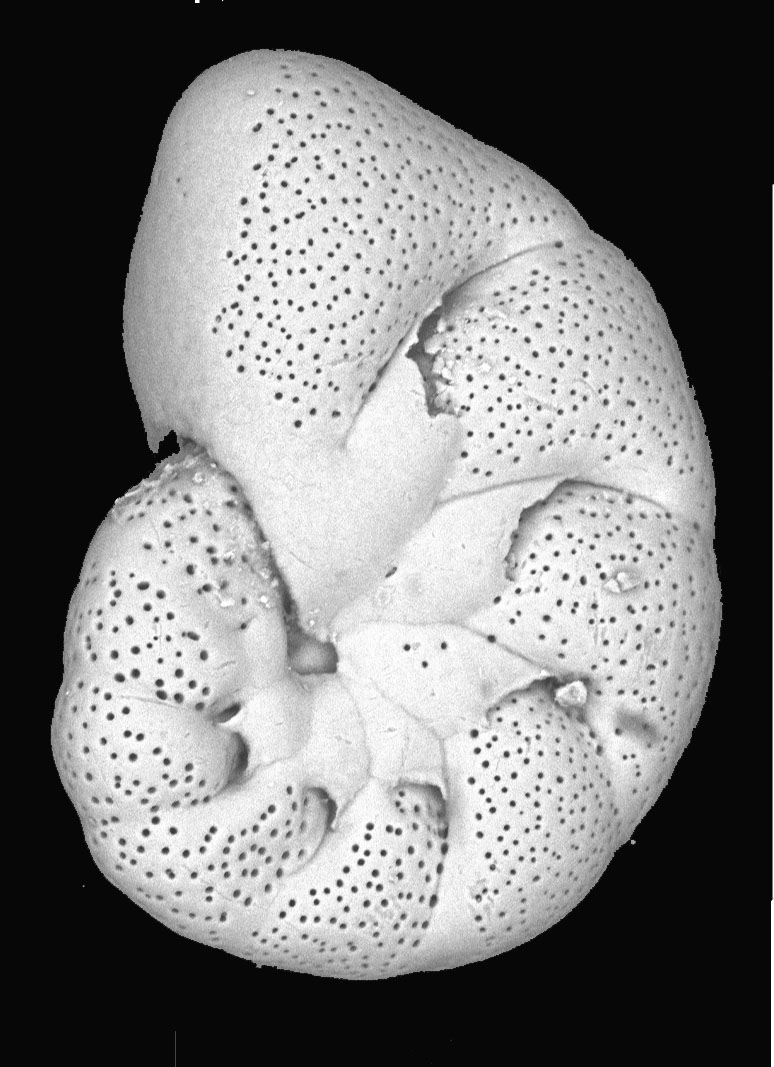Genus – Florilus
Florilus de Montfort, 1808
Description from Loeblich and Tappan (1964): Test free, planispiral but may be asymmetrical, involute but with broad, low chambers increasing rapidly in breadth and thickness, resulting in flaring test, peripheral margin rounded to angled, umbilical region slightly depressed filled with granular skeletal material which may extend slightly long sutures; wall calcareous, finely perforate, granular in structure, single-layered; aperture narrow interiormarginal equatorial opening.
Remarks: Loeblich and Tappan (1964) note that this genus differs from Nonion in the flaring test, due to numerous broad low chambers, and from Nonionella in lacking the single umbilical chamber extension.
Florilus basispinatum (Cushman and Moyer, 1930)
Florilus basispinatum (Cushman and Moyer, 1930) Lankford and Phleger, 1973, p. 119, pl. 3, fig. 15.
Nonion pizarrense Berry var. basispinatum Cushman & Moyer, 1930, p. 54, pl. 7, figs. 18a, b; Cushman and McCulloch, 1940, p. 158, pl. 17, figs. 8, 9; Cushman and Todd, 1947, p. 12, pl. 2, fig. 12.
Nonion basispinatum (Cushman and Moyer) Bandy, 1953, pl. 21, figs 13a-c; McGann, 2007, p. 66, pl. 10, fig. AA.
Pseudononion basispinata (Cushman and Moyer 1930). Patterson, Burbidge and Luternauer, p. 21, pl. 23, figs. 3-5.
Description of Nonion pizarrensis Berry: Test not quite bilaterally symmetrical, there being a slight dropping of the aperural angle on the left side of the apertural face, umbilici depressed; chambers numerous, usually twelve in the last formed volution; sutures not very distinct, only slightly depressed at the periphery flush, aperture a very narrow curved opening at the base of the apertural wall of the last chamber; wall smooth, polished. Diameter longest about 0.63 mm, shortest 0.46 mm. Ratio of thickness to diameter is 1:3.
Description of N. p. var. basispinatum: Variety differing from the typical in the later chambers on which the outer margins towards the base have a fringe of small spinose processes often very conspicuous along the sutures.
Remarks: The holotype of F. basispinatum is from San Pedro, California. Lankford and Phleger (1973) comments on morphologic variability that changed with latitude. Off Baja California, Mexico the morphology showed a high degree of asymmetry, with little spinosity. Off the southern California coast asymmetrical tests are rare and umbilical spinose growth is very well developed.
Distribution: In the Puget Sound this species is rare and none have been preserved with spines.



